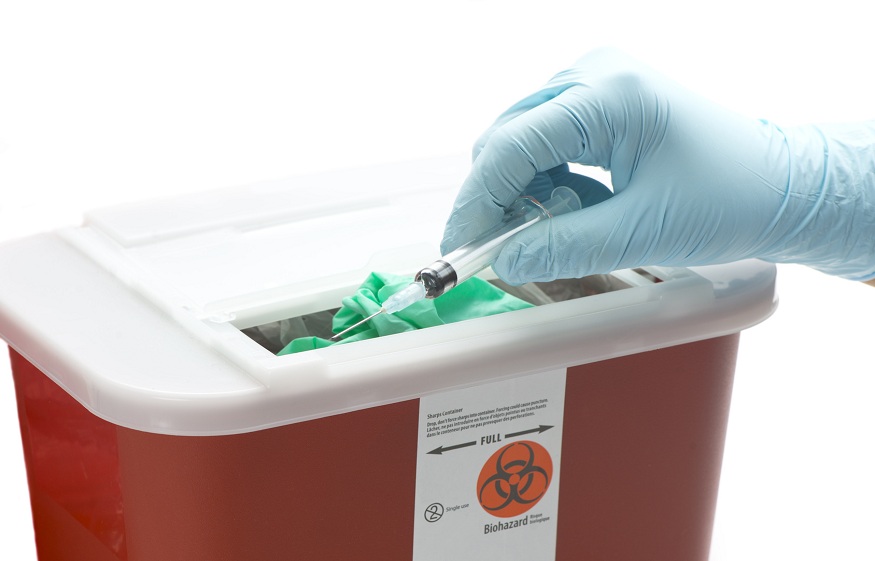The Need for Correct Sharps Waste Disposal to Prevent Needlestick Injuries

Need lestick injuries are accidental stab wounds caused by hollow-bore needles like a hypodermic needle, IV catheter stylets, needles for blood collection, and needles usedfor connecting parts of the IV delivery system. These injuries are known as sharp injuries, and they are caused by any sharp skin penetrating instrument used in medical settings. These injuries also include scalpels, lancets, and broken glass.
Why are the proper sharps waste disposal methods needed to prevent needlestick injuries?
Hospital establishments and medical units need to deploy specialists in the field of sharps waste disposal to protect their patients and staff. The Centers for Disease Control and Prevention (CDC) summarize that the most general causes of such injuries are as follows-
- There is a lack of personal equipment for protection, containers for sharps disposal, and safety devices,
- Lack of the right procedures for reporting sharps injuries,
- A lack of awareness when it comes to occupational hazards,
- Staff shortage,
- The staff has been insufficiently trained,
- Restricted access to containers for sharps disposal,
- The recapping of needles after usage,
- The passing of sharp instruments from hand to hand in the operating rooms,
- The failure to use the containers for sharps disposal after use,
- Sudden medical incidents, and
- Unexpected patient reactions.
What are the health consequences of sharps injuries by needlestick?
The major concern of any needlestick injury is not the trauma but the precarious exposure to any patient’s blood or body fluids that might carry infectious disease.
There are about 20 different pathogens that involve fungi, bacteria, and viruses that can be transmitted to the staff of the healthcare and hospital units via needlestick injuries. The possibility of developing a disease after such needlestick injuries depends upon a number of factors that include-
- The concentration of the pathogen in the blood or the body fluid of the patient.
- The depth of the wound caused.
- The volume of blood lost.
- The amount of pathogen transmitted and the phase of infection of the carrier of the pathogen.
Besides the above, the rate of seroconversion and vaccination availability or treatment for post-exposure prophylaxis play an instrumental role as infected people face the risks of developing chronic and acute diseases with even the probability of death. Due to health complications and clinical severity, the most dangerous diseases linked to needlestick injuries are blood-transmitted pathogens, HBV, HIV, and HCV.
The need for specialist companies to manage and dispose of sharps waste in hospital units
This is why it is prudent for hospital administrations and medical units to rely on specialist companies that deal with safe sharps waste disposal strategies and methods. These companies have trained staff with labeled containers for sharps disposal.
The laws and regulations approve these containers of the state, and they are equipped with safety locks to prevent tampering and spills. The material of the containers for waste disposal is made of heavy-duty materials that prevent tearing or puncturing of the container when its contents are filled with sharp needles and other medical instruments.







